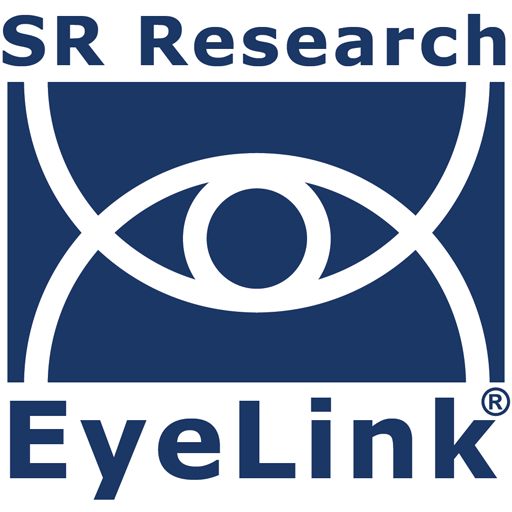
By recording where and for how long a reader’s eyes fixate on words, researchers can gain invaluable insights into the complexities of reading. Thanks to SR Research hardware and software, eye tracking has become a cornerstone of reading research, enabling a deeper understanding of how we process written language.
The Power of EyeLink Eye Trackers in Reading Research
The EyeLink 1000 Plus 和 EyeLink Portable Duo eye trackers are the tools of choice for reading research, offering exceptional accuracy, high sampling rates, and low noise levels. These features ensure accurate and precise fixation locations and durations can be determined, allowing researchers to detect the most subtle differences in reading times and behaviors. The EyeLink 1000 Plus can be integrated with a wide range of other biometric recording devices, including EEG, MEG, fMRI and fNIRS, allowing researchers to gain even deeper insights into the neural mechanisms underlying reading. The EyeLink Portable Duo facilitates reading research in diverse settings like schools and clinics, while the EyeLink 3 is ideal for investigating the integration of eye and head movements during reading.
Eye tracking research in reading encompasses a wide array of topics, including:
- Word Recognition and Lexical Access: This research analyzes fixation durations on words to understand how a reader’s mind accesses a word’s meaning, sound, and grammatical information from their mental lexicon.
- Sentence Processing and Syntactic Parsing: Eye tracking reveals how readers mentally group words into phrases and clauses by measuring longer fixations and regressions when they encounter complex or ambiguous sentence structures.
- Reading Development in Children: By tracking the eye movements of young readers, this area investigates how skills like word decoding, fluency, and comprehension evolve as children become more proficient.
- Reading Disorders: Researchers study the distinct eye movement patterns of individuals with conditions like dyslexia, such as longer fixations and more frequent regressions, to understand the underlying cognitive difficulties.
- Second Language Reading: This area examines the eye movements of non-native readers to identify how their reading strategies and processing difficulties differ from those of native readers.
- Multimodal Reading: This research investigates how readers integrate information from both text and accompanying images, tracking how their gaze shifts between the two sources to build a coherent mental model.
- Skimming and Scanning Strategies: By analyzing patterns of fixations and saccades, researchers can explore the strategies people use when, for example, they are not reading for deep comprehension but are searching for specific information.
- Translation: Researchers use eye tracking to explore the cognitive operations involved in translating written and spoken language. Common metrics reported include the relative time spent on the to-be-translated text and the translation itself.
Case Study Examples of EyeLink Eye Trackers in Reading
Powerful Software Solutions for Reading Research
EyeLink eye tracking systems integrate seamlessly with a suite of powerful software, streamlining the research process. Experiment Builder provides an intuitive graphical interface for creating complex reading experiments, and includes automatic Interest Area generation for text, and many templates for reading research. WebLink enables researchers to record eye movements as participants read and interact with websites and other digital media, including PDFs. Data Viewer is a comprehensive tool for analyzing and visualizing eye movement data, and generates reports that allow common reading measures such as first pass reading duration and the number of regressions to be derived. In addition to this proprietary software, EyeLink eye trackers are compatible with a wide range of third-party software, such as PsychoPy, E-Prime, and Psychtoolbox, offering reading researchers flexibility and control.
Common Eye Tracking Reading Tasks
Reading researchers use many different tasks, some common examples of which are listed below:
- Sentence / Paragraph Reading: Participants read sentences or paragraphs, and their eye movements are recorded to study natural reading processes. Experiment Builder can generate automatic interest areas at the character, word, phrase or sentence level. A list of common reading measures, all of which can be easily generated with our analysis software Data Viewer, is provided below.
- Moving Window Tasks: In these “gaze-contingent” tasks, the portion of text currently being fixated is either revealed or masked. Variants of the movingn window task are used to determine the size of the perceptual span and preview effects during reading. Experiment Builder allows gaze-contingent tasks to be generated with ease, and we provide many gaze-contingent templates that can be adapted with very little effort.
- Boundary Crossing Tasks: In boundary crossing tasks some or all of a word that has yet to be read are changed when gaze crosses an invisible boundary earlier in the sentence. Researchers use this task to explore parafoveal processing and preview effects. The high sampling rate and low end-to-end latency of EyeLink systems provide the temporal precision necessary for boundary crossing tasks.
Data Viewer allows researchers to extract and analyze a rich set of eye tracking measures that provide insights into the cognitive processes underlying reading. Some common reading measures (which can be generated at the word, phrase or sentence level) include:
- Single Fixation Duration: The duration of a fixation on a target region, provided that region is fixated one time only, and that the one fixation does not occur after fixations on words further along in the text (progressive fixations).
- First Fixation Duration: The duration of the first fixation on a target region, provided that the first fixation does not occur after fixations on words further along in the text.
- Gaze Duration / First Pass Duration: The total duration of all fixations in a target region until the eyes fixate a region of text that is either progressive or regressive to the target region, provided that the first fixation on the target region does not occur after any fixations on words further along in the text.
- First Pass Fixation Count: The number of fixations on the region during first pass reading (i.e., gaze duration reading), where first pass reading includes the first run on the region provided that the first fixation on the region did not occur after any fixations progressive to the region.
- Right-Bounded Duration: The total duration of all fixations in a target region until the eyes fixate a region of text that is progressive to the target region, provided that the first fixation on the target region does not occur after any fixations on words further along in the text.Regression Path Duration: The total duration of all fixations that occur from the first fixation on a target region (e.g. a word) until the target region is exited in a progressive manner (including fixations on the target region and fixations on words regressive to the target region), provided that the first fixation on the target region does not occur after any fixations on words further along in the text.
- Regression Path Duration: The total duration of all fixations that occurred, from the first fixation on a target region until the target region was exited in a progressive manner (including fixations on the target region and fixations on words regressive to the target region), provided that the first fixation on the target region did not occur after any fixations on words further along in the text.
- Rereading Duration: The difference between Regression Path Duration and Gaze Duration (so, effectively including only fixations on regions regressive to the target region, and not any fixations on the target region itself).
- Regression Rate: Regressions are eye movements to a previously read portion of text, and are thought to indicate moments of comprehension difficulty or syntactic confusion. The regression rate can be computed for each text.
- Word Skipping Rate: This metric calculates the probability that a word will not be fixated on at all, and can be used to understand how factors like word predictability and length influence reading.
The superior data quality and comprehensive software solutions make EyeLink eye trackers the perfect choice for researchers seeking to unravel the complexities of the reading process.
For information regarding how SR Research products can help your research, please contact us. We are happy to help! To see peer-reviewed published research with EyeLink eye trackers, see our list of over 13,000 publications or our sample of case studies.






